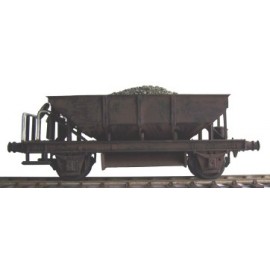Generally, plastic model plane kits do not come with plinths supplied. Nowadays, the majority of kits are designed to...
No products
Product successfully added to your shopping cart
There are 0 items in your cart. There is 1 item in your cart.
Search Tips
Christmas and New Year
We are dispatching orders every weekday apart from Christmas Day, Boxing Day and New Year's Day.
If you order is time critical, select next day delivery at checkout.
The shop in Sandown is closed from 25th December, reopening on 30th December.
How much weight should I add to my rolling stock?
We have all been there, with that wagon or coach that derails all of the time, and we suspect that the reason for this mischievous item of rolling stock constantly making a break for freedom is a lack of weight. The solution is easy though: simply add more, but how much is too much?
To start with, you should take a little bit of time to think about the environment in which your trains operate. When you increase the weight of a wagon or coach, it will amplify the forces on the train as a whole. This will be most noticeable on tighter curves, complicated junctions and anywhere there is a gradient. If your engine has to cope with too much weight under these circumstances, it may well start to slip or in the worst case scenario, the train could derail. So too much weight is probably not advisable if your layout is particularly complex.
Next, you should think about the wagon or coach that you are preparing to add weight to. A much overlooked consideration is how freely it runs: if the wheels are a little stiff to begin with, then adding too much weight can amplify the already undesirable effect of the vehicle pulling back on the train which can cause problems especially on points.
If however, you are confident that the rolling stock is in great condition and can cope with the extra weight, and your track layout will accommodate heavy consists, then a rough rule of thumb is that you can pretty much double the weight of a particularly light piece of rolling stock. This will be more than enough to provide significant downforce to your model without causing too much trouble. In most cases though, it will not even be necessary to go that far, especially as there's a trade-off between having nicely weighted rolling stock and having trains that your engine can actually haul. So the best advice is to add a little bit at a time to find the optimum weight.
A top tip to save you having to take your model to pieces several times while you experiment is to try temporarily taping weights (or a spare track rubber) to the outside of your model to assess the effects before you apply a permanent solution. But should you try this, watch out for tunnels!
Click here to receive the tips weekly in your mailbox. You can unsubscribe at any time.










